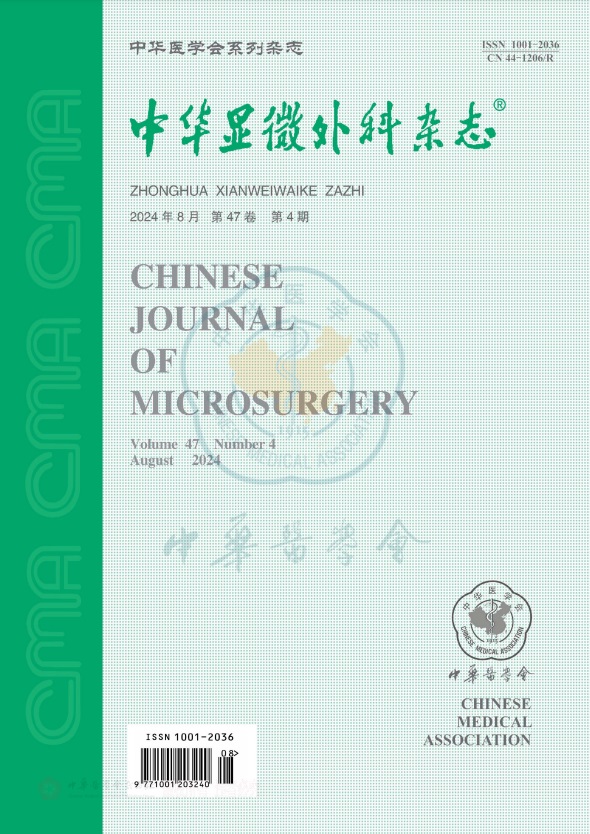Clinical application of the technology of supercharging and making flap in Yamano area I type II replantation of broken finger
引用次数: 0
Abstract
Objective To investigate the clinical efficacy of the use of the technology of supercharging and making flap on Yamano area I type II replantation of broken finger. Methods From January, 2016 to June, 2018, 15 cases (16 fingers) of type II replantation of severed fingers in Yamano area I were treated. During the operation, 2 arteries in the severed fingers were anastomosed and supercharged outside the arteries. Bone fragments in the severed fingers were removed to make them flaps. The blood supply and long-term healing of replanted finger were observed after routine treatment including antiinfection, anticoagulation and antispasm in outpatient follow-up. Results Sixteen fingers of replantation of severed fingers survived smoothly. Followed-up for 6-12 months showed that there were no deformities in the surviving finger, good nail growth, full abdomen and recovery of pain and temperature. The static 2-PD was 7-9 mm. According to the Evaluation Criteria of Replantation Function of Severed Finger of Chinese Medical Association Hand Surgery Society, 13 fingers were excellent and 3 fingers were good. Conclusion In the replantation of Yamano area I type II amputated finger, high survival rate and good healing effect can be achieved by using the technology of supercharging and making flap. Key words: Replantation of broken finger; Yamano I area; Supercharging; Making flap增压造瓣技术在山野区ⅱ型断指再植中的临床应用
目的探讨应用增压造瓣技术在山野区ⅱ型断指再植中的临床疗效。方法2016年1月~ 2018年6月对山野1区ⅱ型断指再植术15例(16指)进行治疗。术中对断指内2根动脉进行吻合,并在动脉外增压。被切断的手指中的骨碎片被取出来做皮瓣。门诊随访观察再植指经常规抗感染、抗凝、抗痉挛治疗后的血供情况及远期愈合情况。结果16根断指再植术顺利成活。随访6-12个月,存活手指无畸形,指甲生长良好,腹部饱满,疼痛和体温恢复。静态2-PD为7-9 mm。按照中华医学会手外科学会《断指再植功能评价标准》评定为优13指,良3指。结论在山野ⅰ区ⅱ型断指再植中,采用增压造瓣技术可获得较高的成活率和良好的愈合效果。关键词:断指再植;山野一区;增压;使皮瓣
本文章由计算机程序翻译,如有差异,请以英文原文为准。
求助全文
约1分钟内获得全文
求助全文
来源期刊
CiteScore
0.50
自引率
0.00%
发文量
6448
期刊介绍:
Chinese Journal of Microsurgery was established in 1978, the predecessor of which is Microsurgery. Chinese Journal of Microsurgery is now indexed by WPRIM, CNKI, Wanfang Data, CSCD, etc. The impact factor of the journal is 1.731 in 2017, ranking the third among all journal of comprehensive surgery.
The journal covers clinical and basic studies in field of microsurgery. Articles with clinical interest and implications will be given preference.

 求助内容:
求助内容: 应助结果提醒方式:
应助结果提醒方式:


